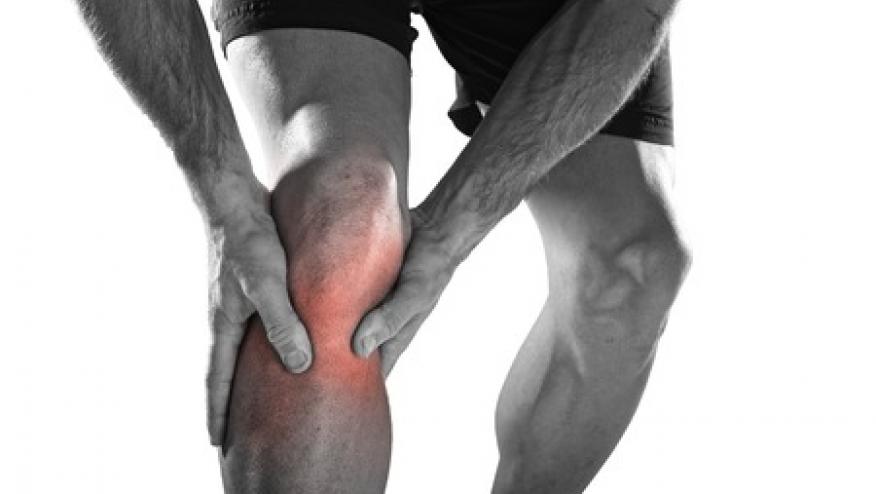Targeting the Wnt Pathway Fails in OA Save

The Wnt pathway modulator lorecivivint failed to meet the primary endpoint in a phase IIa study for knee osteoarthritis (OA), but showed promise in certain patient subgroups, researchers reported.
On the primary endpoint, which was improvement in pain on the Western Ontario and McMaster Universities (WOMAC) Osteoarthritis Index, no dose of intra-articular lorecivivint (0.03 mg, 0.07 mg, or 0.23 mg) showed statistically significant differences from placebo at week 13, according to Yusuf Yazici, MD, of NYU Langone Medical Center in New York City, and colleagues. Yazici is also chief medical officer of Samumed, the study sponsor.
However, in a post-hoc exploratory analysis of a subgroup of patients who had unilateral knee pain, patients receiving the 0.07-mg dose had significant improvements at week 52 on WOMAC pain scores, with a between-group difference of -8.73 (95% CI -17.44 to -0.03, P=0.049), and also on function scores, with a between-group difference of -10.26 (95% CI -19.82 to -0.69, P=0.036), they reported online in Arthritis & Rheumatology.
Nonetheless, "the study was negative," commented David T. Felson, MD, of Boston University School of Medicine, who was not involved in the study. "They did some secondary analyses where they tried to find a positive subgroup, but those usually aren't very robust in terms of findings," he said.
"The results are discouraging," Felson told MedPage Today.
Currently available treatments for knee OA focus on symptom relief, and are of limited efficacy and carry risks of side effects. "There remains a great unmet need for new treatments that provide symptom relief and even more of a need for disease-modifying OA drugs," the researchers wrote.
The Wnt pathway regulates the differentiation of progenitor cells in the knee joint, and aberrant activity in this pathway results in differentiation away from chondrocyte development and toward osteoblasts. High levels of activation of the Wnt pathway have been demonstrated to raise OA susceptibility in both animals and humans.
Lorecivivint modulates Wnt pathway activity through the inhibition of CDC-like kinase 2 and dual-specificity tyrosine phosphorylation-regulated kinase 1A, which helps block inflammation and improve chondrocyte function. It appeared safe in a phase I trial that included 61 individuals who received intra-articular injections, with no signs of systemic exposure.
To further explore a possible role for this small-molecule agent in knee OA, the investigators enrolled 455 adults from 2015 to 2017. Participants were randomized to receive an injection on day 1 of 0.03 mg, 0.07 mg, or 0.23 mg lorecivivint or placebo and were then followed for 1 year. Background nonsteroidal anti-inflammatory drugs and acetaminophen were permitted. Participants' mean age was 60.3, and mean BMI was 29.9. Almost two-thirds were women and the majority were white.
Radiographic Kellgren-Lawrence disease grade was 3 in 64.2%, and 36% had only unilateral knee involvement. Baseline characteristics were similar across the four groups.
Although the primary endpoint was not met, the investigators considered potential effects in patients with unilateral knee pain and also in those with unilateral knee pain who did not have widespread pain, which was defined as a Widespread Pain Index score of 4 or lower and a Symptom Severity Scale score of 2 or less.
In the group with unilateral knee pain without widespread pain, those receiving 0.07 mg of intra-articular lorecivivint had significant improvements compared with placebo in WOMAC pain scores at weeks 26, 39, and 52, with between-group differences at those time points of -9.11 (95% CI -17.75 to -0.47, P=0.039), -11.83 (95% CI -23.23 to -0.42, P=0.042), and -11.21 (95% CI -20.99 to -1.43, P=0.025), reported Yazici and colleagues.
On radiographic analyses, the investigators reported that the mean changes in medial joint space width at weeks 26 and 52 were -0.07 and -0.04 mm for the 0.03-mg group, -0.11 and -0.09 mm in the 0.07-mg group, -0.02 and -0.16 mm in the 0.23-mg group, and -0.20 and -0.14 mm in the placebo group. At week 26, the mean change in joint space width was significantly different from placebo only in the 0.23-mg dose group, with a between-group difference of 0.19 (95% CI 0.02-0.36, P=0.032).
Arthralgia was the most common adverse event, and the most frequent serious adverse events were infections and cardiac disorders.
In discussing their findings, the investigators noted that the benefits seen in the unilateral knee pain subgroup might be explained by the complexity of bilateral knee pain, which can involve nociceptive biomechanical influences and the presence of fibromyalgia. Patients with unilateral knee pain may thus be better able to determine the specific source of their pain, they suggested.
"These results inform the design of future lorecivivint trials by identifying a target population in which potential symptomatic efficacy could be more clearly delineated," Yazici and colleagues concluded.
Limitations of the study included its lack of a formal preplanned sample size or power calculation, they noted.
The study was supported by Samumed.
Arthritis & Rheumatology: Yazici Y, et al "Lorecivivint, a novel intra-articular CLK/DYRK1A inhibitor and Wnt pathway modulator for treatment of knee osteoarthritis: a phase 2 randomized trial" Arthritis Rheum 2020; DOI: 10.1002/art.41315.








If you are a health practitioner, you may Login/Register to comment.
Due to the nature of these comment forums, only health practitioners are allowed to comment at this time.